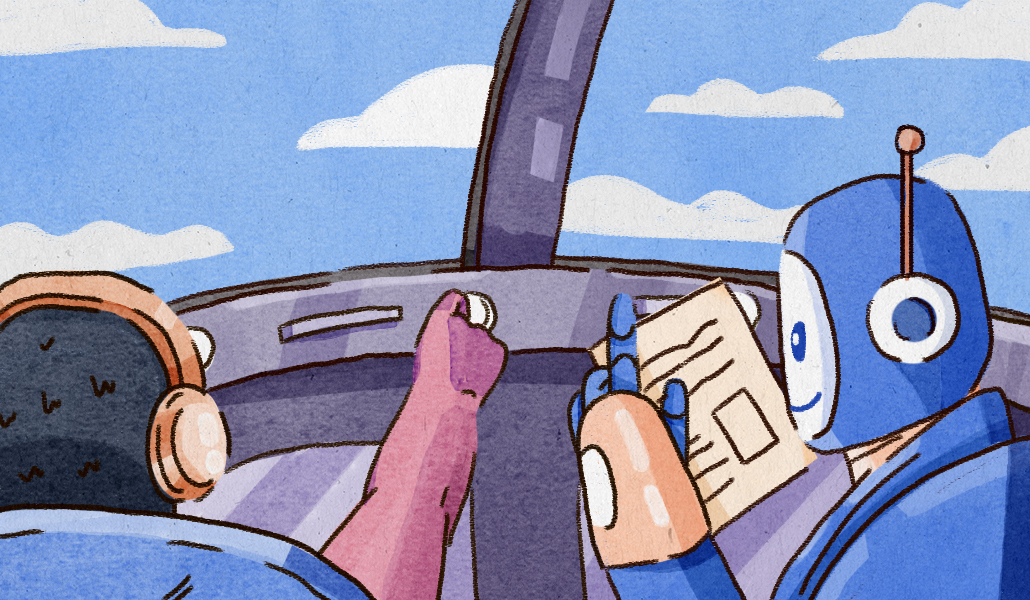The new ‘power skill’: A guide to becoming AI literate

This article is the last in a three-part series focused on how to maximize efficiency and productivity and start the year strong, during what historically has been one of the lowest-performing months — January.
When it comes to workforce AI readiness, the spectrum is broad. For all the employers that have pledged millions of dollars toward training their employees on — or at least encouraging them to experiment with — generative AI tools, a far larger number are still floundering with how to tackle this fast-moving tech.
Add in the numerous reports about AI anxiety among workers who don’t feel skilled in AI, which seem to surface every other week, and the future of work does appear unsettling.
But here’s a spoiler: You don’t need to be tech-savvy to improve your AI literacy.
“AI literacy is now a power skill — similar to critical thinking, problem solving or even data literacy,” said Jim Hemgen, talent development director at Booz Allen, the top AI provider for the federal government that employs over 33,000 people. “It [AI] needs to be embraced by the employees, even if their leadership is not there yet. They need to kind of get out in front on their own. And eventually, leadership does need to foster a culture of that kind of growth mindset.”
And grasping the basics doesn’t take weeks to learn, nor days, but hours. “In a low-code, no-code era, supporting people on their AI learning journeys doesn’t take more than eight to 10 hours to use the technology in an intermediate way and another 20 to 30 hours to develop advanced skills,” said Dr. Chris Brauer, director of innovation at Goldsmiths, University of London, where he teaches students to use AI, and chief innovation officer at London-based AI advisory and solutions firm Symmetry, where he delivers training and development curriculum for workforces.
“Imagination is the starting point for everything that was ever innovated, discovered and created in AI,” said Brauer. “And when are we most free and limitless in our imagination? Our childhoods. So we approach AI education, training and development through a similar lens where we encourage people to become ‘learn-it-alls’ as opposed to ‘know-it-alls.’”
That means that Brauer’s training courses follow the educational structure rooted in primary schools: wonder, discovery and apply. The Wonder section is about opening yourself up to being curious about the potentials and risks of AI at work, then people move on to Discovery where they learn some tools and techniques, then Apply where they get a chance to experiment and play around with different AI apps in safe and secure sandboxes.
Here’s a starter kit:
Understand WTF AI actually is
Much as ChatGPT brought generative AI into the mainstream, there is still a lot of confusion and misunderstanding around it, and its older sibling — traditional AI. Nailing this core understanding, though, will serve you well not only in determining your day-to-day job but also when finding a new one.
It’s surprising how many people still stumble when it comes to defining in layman’s terms what AI actually is, stressed Cliff Jurkiewicz, vp of global strategy and general manager of the Customer Advisory Board at HR platform Phenom. Naturally, if you talk to a tech engineer or developer, they will have a very technical definition, but the average person needn’t get bogged down in that level of technicality. Essentially, AI is pattern recognition, at scale. “My definition is: it’s the science of helping machines think like humans. And we do that mostly through pattern recognition,” said Jurkiewicz.
Take a chess game app. Playing against the app is playing the AI that has absorbed all the possible chess moves that are feasible. It’s what Jurkiewicz describes as a “closed loop” because the AI has absorbed all the data about all the possible chess moves that exist. Then there is the type of pattern recognition where the AI is constantly learning new patterns. And generative AI, and the large language models that fuel it, are making patterns from that, which is what generates the content. Understanding it at its core removes a lot of the fear around the tech itself, which is often what prevents people from wanting to embrace it, Jurkiewicz said.
Check what information not to share with AI tools
This is a big one. Intellectual property is everything in the digital world. And taking the trouble from the outset, to understand what information about your company can and can’t be shared will be a vital first step.
After all, once something is typed into ChatGPT, it’s no longer within the company’s firewall. It’s out, on the open web. And that creates a certain level of risk.
“Privacy is really critical,” said Hemgen. “We need to be cautious. Let’s say somebody pulls up ChatGPT and wants to copy and paste some very sensitive information because they want to expand a detail on it. They then lose control of that data, because it is now living outside your firewall in some large language model that can then be accessed by competitors and others who can use that in a nefarious way.”
You only have to look at the mess generative AI created around copyright infringement in the arts world to see how quickly the proverbial horse has bolted.
The only way to avoid this is to get to grips with your company’s data and security protocols. So ask HR, and whoever else has the guidance on this within the company, to avoid later headaches, stressed Hemgen.
Get curious about what AI tools are available to you
If you’ve felt your head spinning from the sheer volume of AI products being touted lately — whether it’s from tech giants like Microsoft and Google or smaller startups — you’re not alone. Even experienced tech-savvy AI professionals, who spend a good part of their time with their noses to the AI machine, have confessed they also suffer from AI whiplash. But instead of trying to ride the never-ending (and it really won’t end) carousel of AI product updates, start by figuring out what’s useful for you in your job and discard the rest.
There are the more generic tools, like ChatGPT, which are good for a wide range of tasks: everything from helping you research a subject to writing a press release, a short report or an analysis. But there are also more specific tools that cater to more focused tasks, whether it’s creating sales decks or tools that help with graphic design.
Cultivating that curiosity also includes taking advantage of the many free AI courses available, or following a thought leader on LinkedIn or within your own company to help remain informed, said Hemgen. “Curiosity … is a mindset that will propel you forward and can really enrich your skill set,” said Hemgen. “This is challenging all of us to continuously learn, we can’t just sit back because it’s going to leapfrog us in terms of the technology and the capabilities. Our organizations are looking to see how we can be more efficient, more productive, impact the bottom line and they want to leverage these capabilities. For the everyday worker, it behooves us to be as conversant as we can on the topic.”
Hone your generative AI voice
For the majority of desk-based workers, ChatGPT is a good tool to start with. But anyone who has even typed a simple request in a few times will have realized there is a bit of a knack to it — but one that’s easily learned. An initial ChatGPT response may be a great starting point, but it will usually sound stiff, with none of the personal expression required. Even a work email needs to have a certain element of personal tone to cement a connection between the sender and receiver.
“I recommend that anyone using ChatGPT share 10 writing examples and prompt it to ‘analyze my tone’ so it becomes more personal,” said Jurkiewicz. Then, to really hone what responses you get, he recommends the following prompts:
- Act as if or Act like: “Act as if or Act like you’re a hiring manager at a distribution center with 20 years of logistics experience and write me interview questions for a forklift driver.”
- Analyze: “Analyze my job description for a forklift driver in a distribution center and tell me if it is inclusive. Do I have the right keywords, am I missing anything?” Then based on the results, ask it to rewrite your existing job description in your tone.
- Provide X: “Provide an analytical breakdown comparing employee performance data in year one versus year two. Call out specific skills growth or contraction compared to market demands in those roles.”
- Based on X give me Y: “Based on the need to onboard 500 employees at my distribution center, give me an expected marketing plan to achieve this goal with the necessary steps.” Feed it data and give it a task.
- Using this example/model/code: “Using this training material, write me an updated synopsis highlighting the key themes that have changed.” Or “Using Python, write me a script for my website that performs [X] function.”
Identify your AI copilot’s role
To maximize how AI can make you more efficient in your work, identify which tasks are repeated every day. Those repetitive ones are typically the ones that should be automated and, in doing so, free up time for more enjoyable work that requires more critical thinking. This is “task replacement” not “job replacement,” stressed Jurkiewicz.
Despite all the fear-mongering in the news about AI replacing us, current AI systems like Phenom’s are actually only replacing 10% to 15% of work. “We’re taking the busy work out of your hands so that you can do the more thoughtful work, the more creative work. So when you map all this out, you actually can get a view of your role that maybe you’ve never had before. It lessens the fear and it helps you focus on where these tools are useful and where you become more useful, valuable to yourself and your organization,” Jurkiewicz added.


